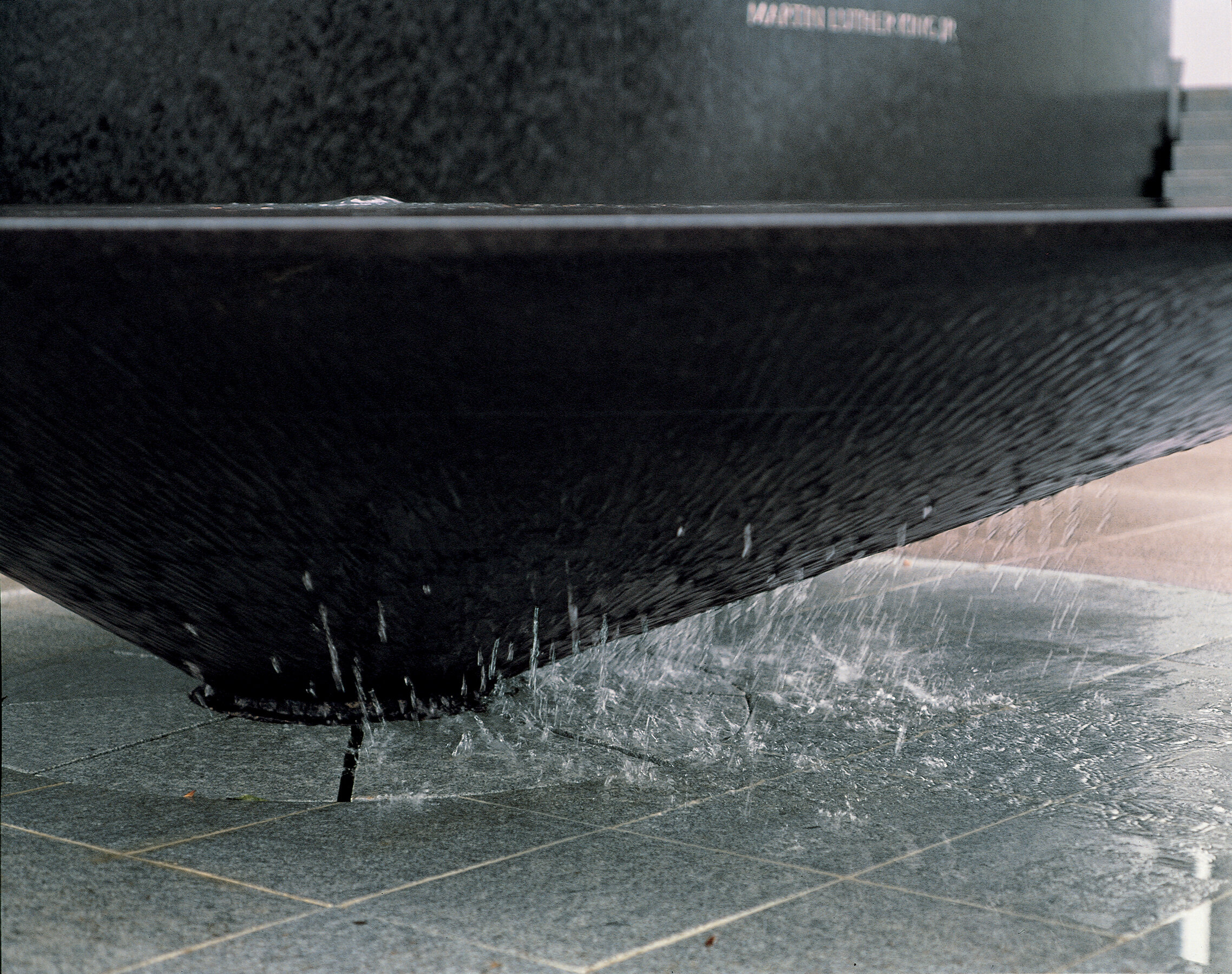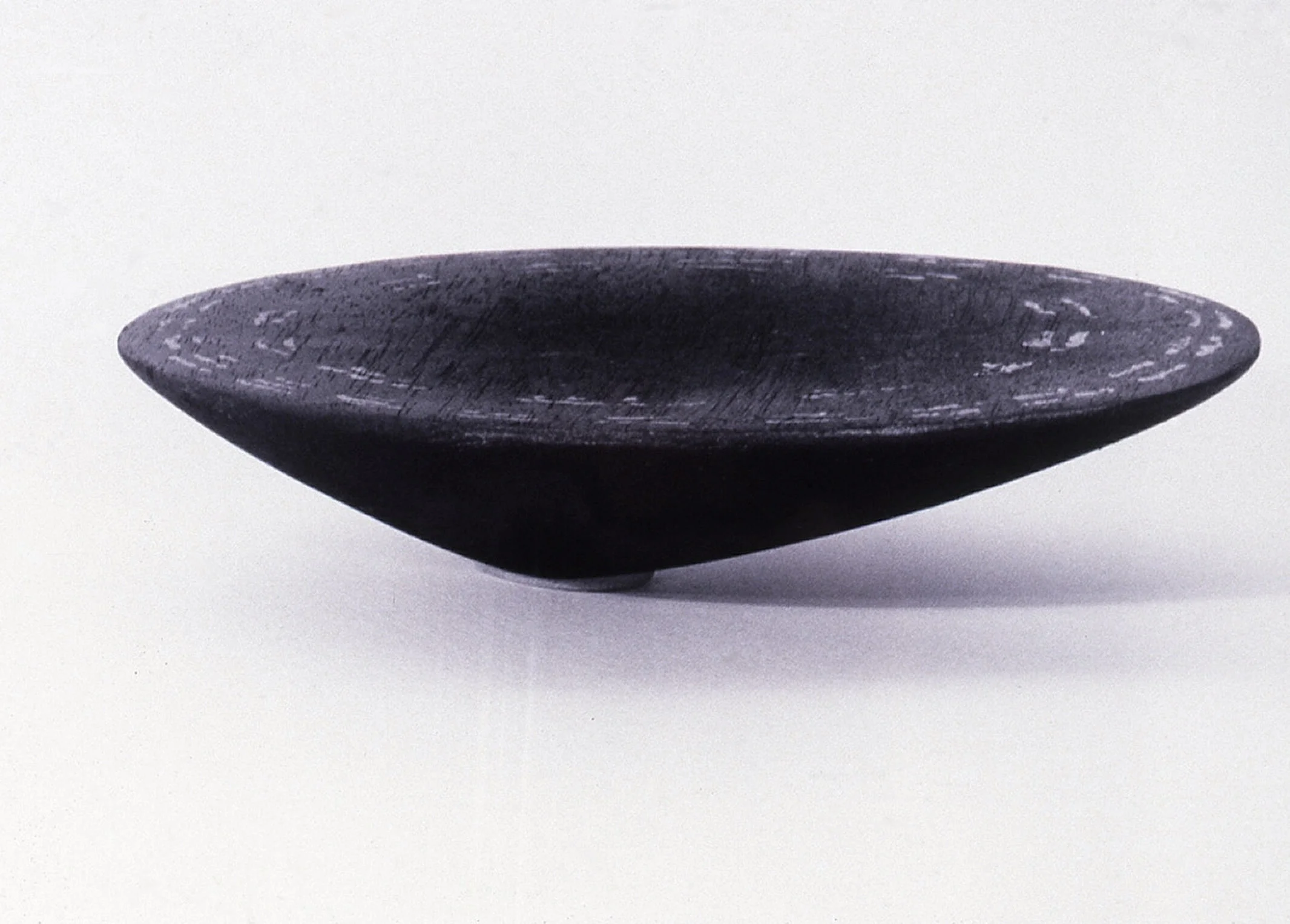Civil Rights Memorial, 1989
Southern Poverty Law Center, Montgomery, AL
Associated Architect: Robert Coles
Fountain Engineer: William Hobbes
Photography: Balthazar Korab
On my first site visit to Montgomery, on the flight down, as I was reading about the civil rights movement, I came across a passage from Dr. Martin Luther King, Jr.'s I have a dream speech, in which he quotes from the book of Amos:
“We are not satisfied, and we will not be satisfied until justice rolls down like waters, and righteousness like a mighty stream.”
Immediately I knew that the memorial would be about water and that these words would become the inspiration for the design. I scribbled a small sketch on a napkin that would evolve into a design of a curved water wall separating the upper and lower plaza and a circular stone water table engraved with a brief history of the civil rights movement. As I further researched this history I realized that the civil rights struggle in this country was a people’s movement, where individual actions were able to truly change history.
On the circular water table is inscribed a timeline of the civil rights movement beginning in 1954 with Brown v. Board of Education and ending in 1968 with Martin Luther King Jr.’s assassination. A gap is left between 1954 and 1968, signifying the time before and after in this continuing history. And the quote from Martin Luther King Jr. I chose to inscribe on the curved water wall to reference the ongoing struggle for racial equality.
The water table reads a bit like a clock face with the time markers/dates following clockwise on the outermost edge. It intertwines events in the history of the civil rights movement with forty people who had lost their lives in the movement. As I focused on the sculpture the Southern Poverty Law Center gathered experts who determined what this concise history would be.
As you approach this 14-ton object the base disappears quickly, leaving you with a perception of the pure surface of words— just the writing, just the history.
The water is carefully controlled, its movement across the top of the table slowed to an almost imperceptible rate; it appears still until a visitor touches the surface, interacting with the piece. I wanted to completely capture the power of the water, keeping its flow in careful check, so that its energy seems to emanate from within the stone.
Related Press:
Coleman, Jonathan. Profile. First She Looks Inward. TIME (November 6, 1989: 90-94)






